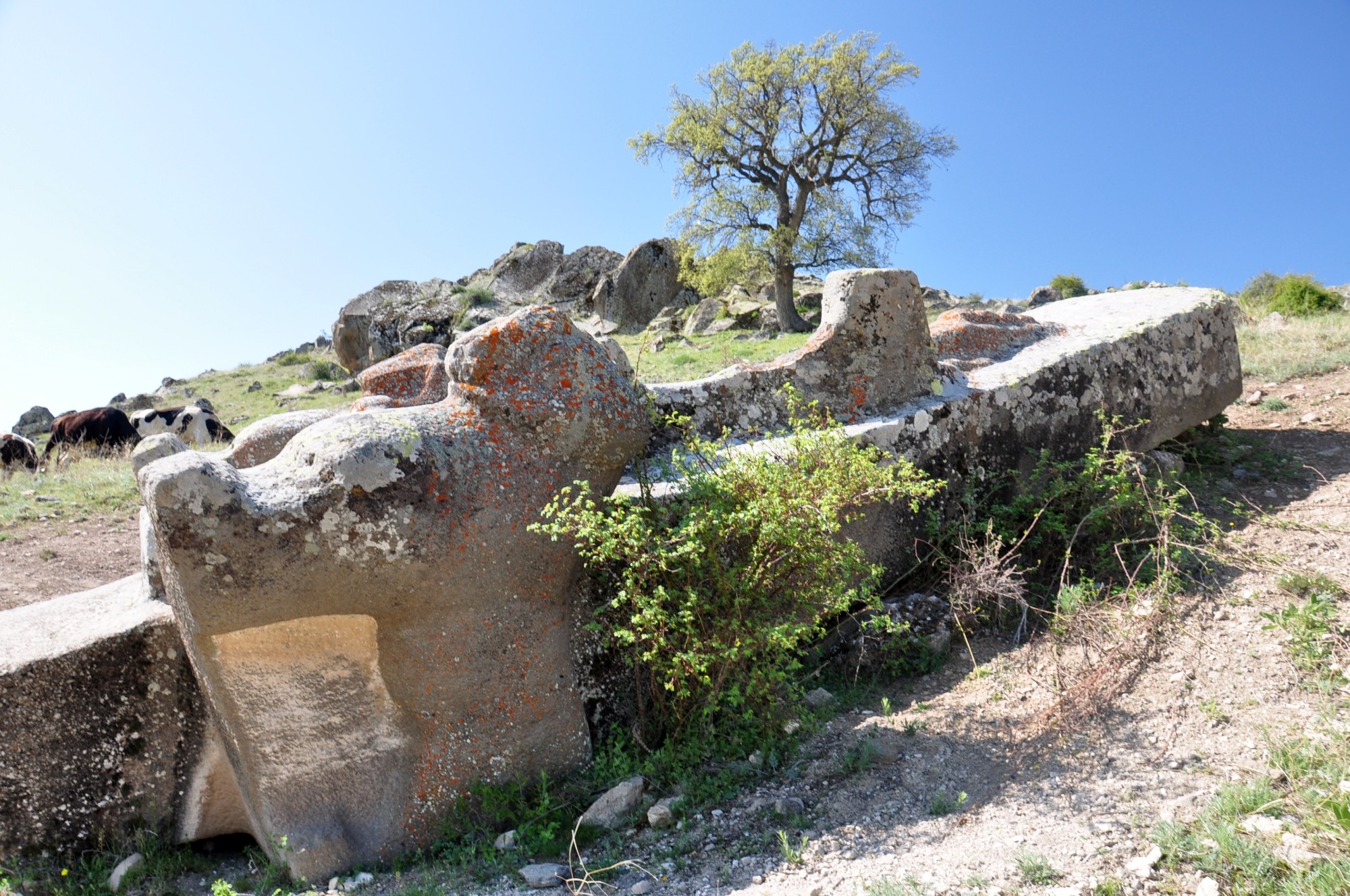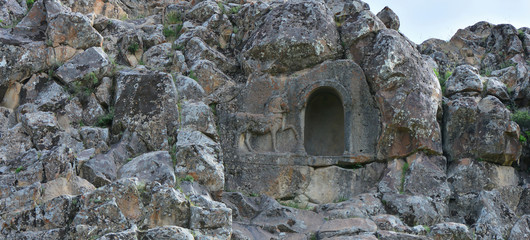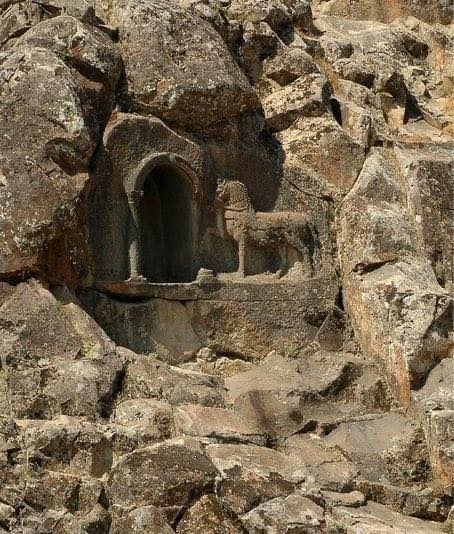The ancient world is a treasure trove of captivating histories and stunning relics that continue to captivate and inspire us today. Among the many remarkable archaeological sites scattered across the globe, the Tomb of Lukuyanus in Turkey stands out as a shining example of the architectural and artistic prowess of the Roman Empire during its golden age.
This well-preserved mausoleum, constructed around the 2nd century CE, offers a fascinating glimpse into the lives and legacies of the elite class of the Roman era. Through its intricate reliefs, inscriptions, and meticulous design, the Tomb of Lukuyanus provides invaluable insights into the cultural, religious, and societal norms that shaped the ancient Mediterranean world.
In this comprehensive blog post, we will embark on a journey to uncover the secrets and significance of this extraordinary tomb, exploring its historical context, architectural features, and the compelling stories it has to tell. Join us as we delve into the mysteries and grandeur of the Tomb of Lukuyanus, a true testament to the enduring legacy of ancient Rome.
The Historical Context of the Tomb of Lukuyanus
The Tomb of Lukuyanus is situated in the ancient Roman province of Galatia, located in modern-day Turkey. This region, known for its strategic importance and diverse cultural influences, played a pivotal role in the expansion and consolidation of the Roman Empire during the 1st and 2nd centuries CE.
The construction of the tomb can be traced back to the reign of the Roman Emperor Hadrian, a renowned patron of the arts and architecture who presided over a period of relative peace and prosperity throughout the empire. During this time, the city of Ankara, the modern-day capital of Turkey, was a thriving urban center, serving as a hub of commerce, administration, and cultural exchange.

It is within this historical context that the Tomb of Lukuyanus was commissioned and built, likely as a grand funerary monument to honor a prominent and influential figure within the Roman elite. The identity of this individual, Lukuyanus, remains a subject of scholarly debate, with some historians speculating that he may have been a local nobleman, a high-ranking military officer, or a prominent civic leader.
Regardless of his exact identity, the Tomb of Lukuyanus stands as a testament to the wealth, power, and cultural sophistication of the Roman ruling class during this period. Its elaborate design and intricate decorative elements reflect the deep reverence for the afterlife and the desire to create a lasting legacy that was so integral to the Roman worldview.
Architectural Marvels of the Tomb of Lukuyanus
The Tomb of Lukuyanus is a remarkable example of Roman funerary architecture, showcasing the ingenuity and craftsmanship of the ancient builders and artisans. Constructed primarily from local limestone, the tomb is characterized by its striking monumental scale and its adherence to the classical architectural principles that defined the Roman aesthetic.
One of the most striking features of the tomb is its imposing façade, which is dominated by a grand, arched entranceway flanked by two sturdy columns. This design is reminiscent of the triumphal arches commonly found throughout the Roman Empire, a symbolic representation of the deceased’s status and achievements. The intricate carvings and reliefs that adorn the façade further enhance the tomb’s visual impact, depicting scenes of mythological figures, military victories, and everyday life.

As visitors step through the entrance, they are greeted by a spacious and meticulously designed interior. The main chamber of the tomb features a vaulted ceiling, supported by a series of arches that create a sense of grandeur and stability. The walls are adorned with a profusion of carved reliefs, each one telling a unique story or conveying a symbolic message.
One of the most remarkable aspects of the Tomb of Lukuyanus is the attention to detail that can be found throughout its architectural elements. The intricate patterns and motifs carved into the stone, the precision of the masonry work, and the careful integration of various architectural styles all speak to the skill and artistry of the Roman builders and craftsmen who brought this monument to life.
Furthermore, the tomb’s strategic placement within the landscape is equally noteworthy. Situated atop a gently sloping hill, the Tomb of Lukuyanus commands a prominent and imposing presence, visible from a distance and serving as a visual landmark for the surrounding area. This strategic positioning not only enhanced the tomb’s visual impact but also underscored the social and political significance of the individual it was built to honor.
Artistic Treasures and Inscriptions
In addition to its impressive architectural features, the Tomb of Lukuyanus is renowned for its wealth of artistic treasures and inscriptions that offer valuable insights into the cultural and societal norms of ancient Rome.
One of the most striking elements of the tomb’s decoration is the series of carved reliefs that adorn the interior and exterior walls. These intricate carvings depict a wide range of scenes, from mythological figures and religious symbols to representations of everyday life and military campaigns.
The level of detail and craftsmanship on display in these reliefs is truly remarkable, showcasing the skill and artistry of the Roman sculptors who created them. The figures are rendered with a lifelike quality, their facial expressions and body language conveying a sense of movement and emotion that brings the scenes to life.

Alongside the carved reliefs, the tomb is also adorned with a series of inscriptions that provide valuable information about the individual it was built to honor, as well as the broader cultural and religious beliefs of the Roman elite. These inscriptions, meticulously carved into the stone, offer insights into the funerary practices, social hierarchies, and commemorative traditions that were integral to the Roman worldview.
One particularly intriguing inscription found on the tomb’s façade is the name “Lukuyanus,” which is believed to be the name of the individual for whom the mausoleum was constructed. While the exact identity and social status of Lukuyanus remain a subject of debate, the mere presence of his name carved in stone serves as a powerful testament to the enduring legacy he left behind.
Furthermore, the tomb’s inscriptions also reveal details about the religious beliefs and cultural practices of the Roman elite. Symbols and references to deities, such as the Roman god of the underworld, Pluto, and the goddess of love, Venus, suggest that the Tomb of Lukuyanus was imbued with deep spiritual and symbolic significance.
By carefully studying the artistic treasures and inscriptions found within the Tomb of Lukuyanus, scholars and historians have been able to piece together a more comprehensive understanding of the cultural, social, and religious fabric of the Roman Empire during its golden age.
The Significance and Legacy of the Tomb of Lukuyanus
The Tomb of Lukuyanus stands as a powerful testament to the enduring legacy of ancient Rome, serving as a tangible link between the present and the past. This extraordinary funerary monument not only offers a glimpse into the lives and legacies of the Roman elite but also provides invaluable insights into the architectural, artistic, and cultural achievements of one of the most influential civilizations in human history.
One of the most significant aspects of the Tomb of Lukuyanus is its role in shaping our understanding of Roman funerary practices and the cultural significance of death and the afterlife in the ancient world. The tomb’s elaborate design, intricate decorative elements, and the wealth of inscriptions found within its walls all point to the deep reverence and importance placed on honoring the dead and ensuring a smooth transition to the next life.

Moreover, the Tomb of Lukuyanus serves as a powerful reminder of the artistic and architectural prowess of the Roman Empire. The tomb’s striking visual impact, its adherence to classical architectural principles, and the exceptional craftsmanship of its carved reliefs and inscriptions all attest to the Romans’ mastery of engineering, design, and artistic expression.
Beyond its historical and cultural significance, the Tomb of Lukuyanus also holds immense value as a testament to the enduring power of human creativity and the ability of ancient civilizations to leave an indelible mark on the world. Even centuries after its construction, this magnificent monument continues to captivate and inspire visitors, serving as a tangible link to the past and a testament to the enduring legacy of the Roman Empire.
As we continue to explore and study the Tomb of Lukuyanus, we are reminded of the wealth of knowledge and insight that can be gleaned from the study of ancient artifacts and architectural wonders. By delving into the stories and histories they have to tell, we can gain a deeper understanding of the human experience, the evolution of civilizations, and the timeless power of human ingenuity and artistic expression.
Conclusion
The Tomb of Lukuyanus stands as a shining example of the architectural and artistic achievements of the Roman Empire, offering a window into the lives, beliefs, and legacies of the ancient world. Through its intricate design, captivating reliefs, and thought-provoking inscriptions, this magnificent funerary monument continues to captivate and inspire scholars, historians, and visitors alike.
As we explore the rich history and cultural significance of the Tomb of Lukuyanus, we are reminded of the enduring power of the past to shape our present and future. This extraordinary relic serves as a testament to the enduring human spirit, the power of creativity, and the enduring legacy of one of the most influential civilizations in human history.
Whether you are a history enthusiast, an art lover, or simply someone who appreciates the wonders of the ancient world, the Tomb of Lukuyanus is a must-see destination that promises to leave a lasting impression. So, embark on a journey of discovery and uncover the secrets and stories that lie within this remarkable monument, and be inspired by the timeless beauty and grandeur of ancient Rome.
